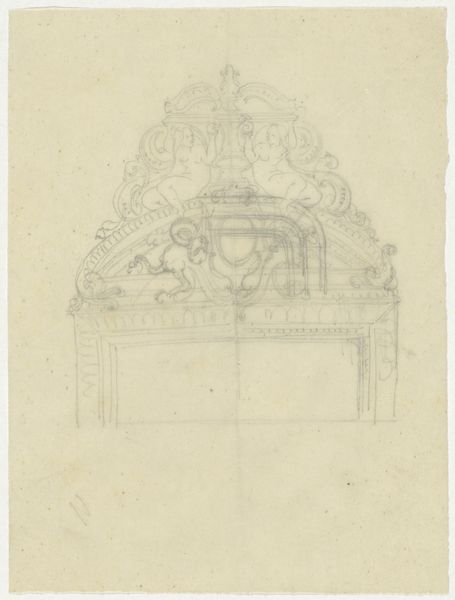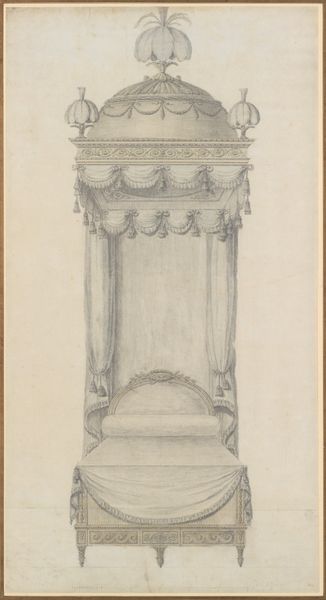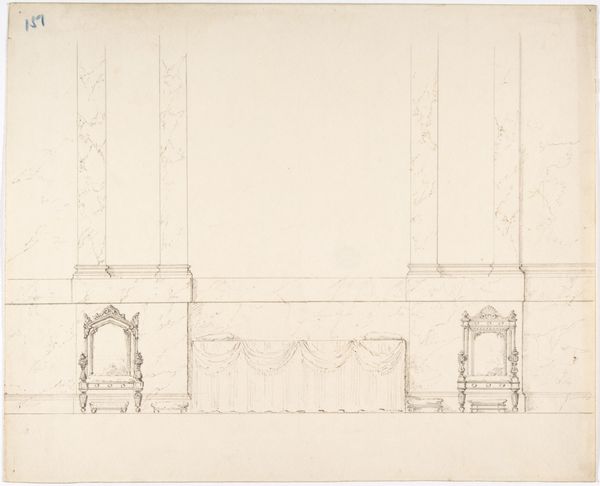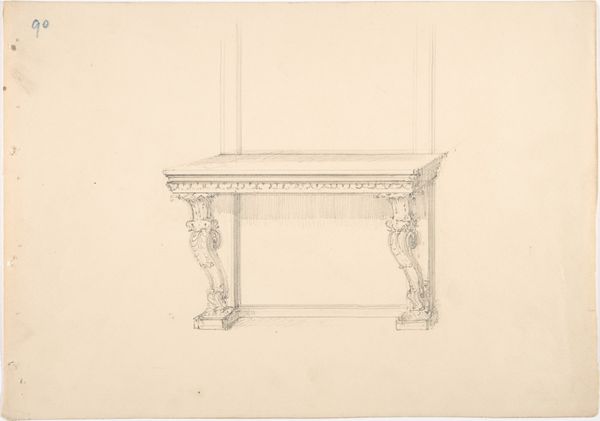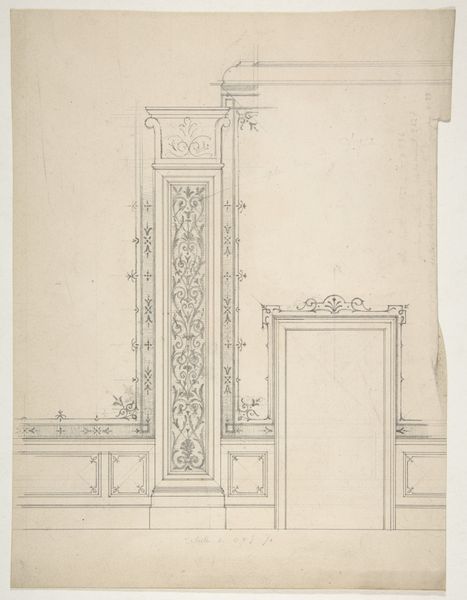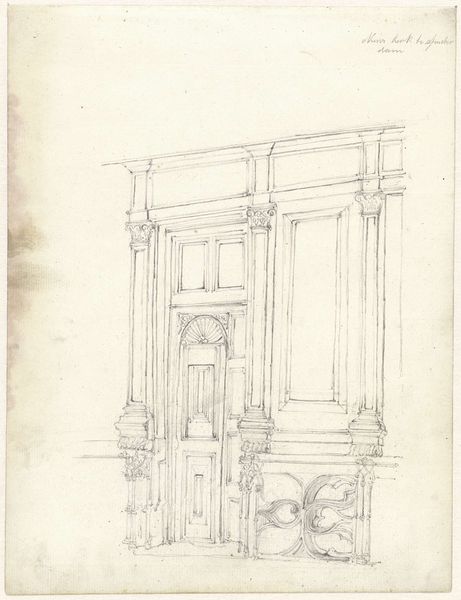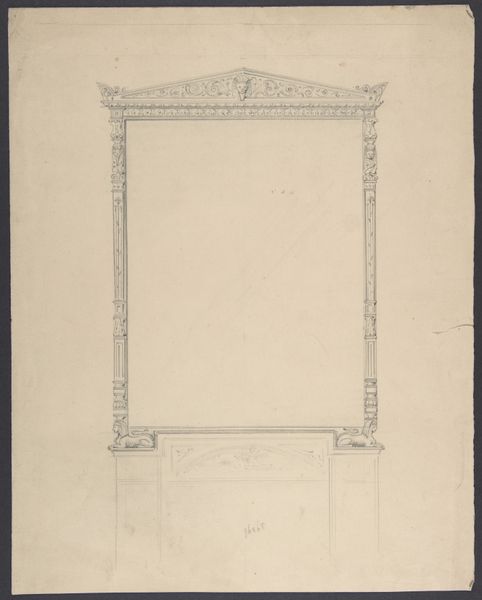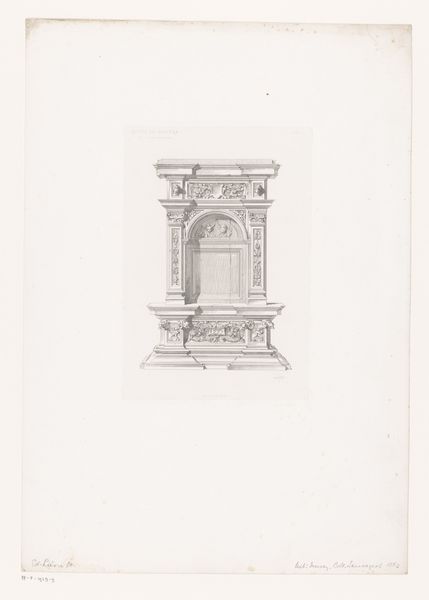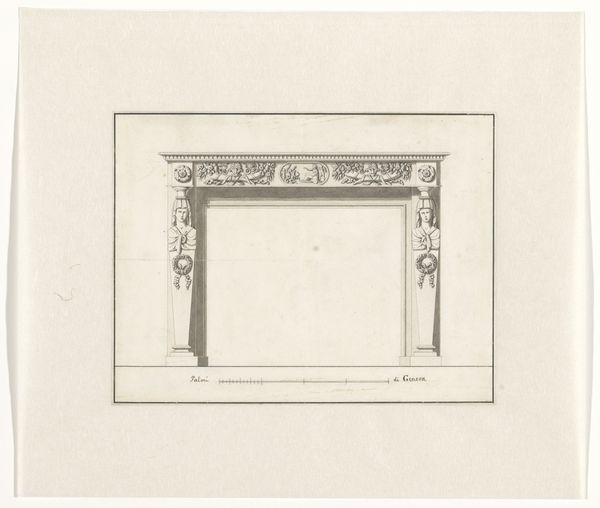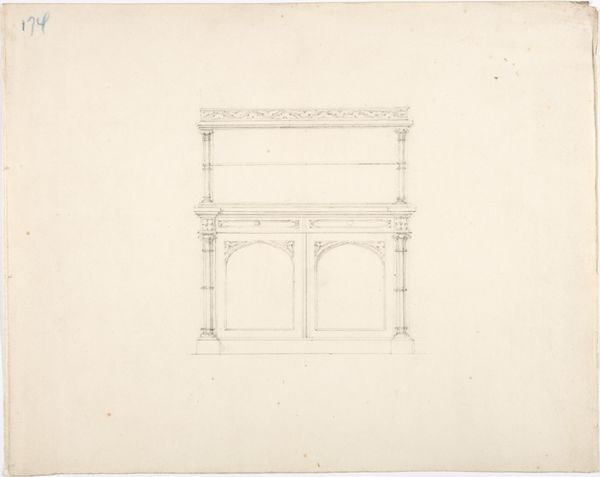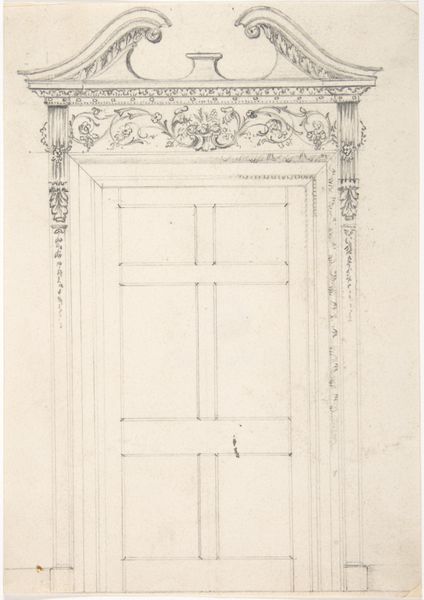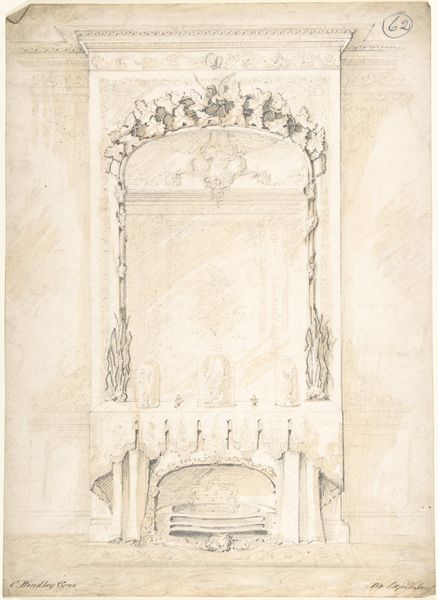
Design for a Drawing Room Mirror, for 11 Princes Gate, London 1800 - 1900
0:00
0:00
drawing, print, pencil, architecture
#
drawing
#
neoclacissism
# print
#
etching
#
form
#
geometric
#
pencil
#
decorative-art
#
architecture
Copyright: Public Domain
This drawing room mirror design was rendered in pencil sometime in the 19th century, probably in England. Looking at the sketch, it's clear that the envisioned mirror would be made from carved wood, likely gilded, with a mercury-backed glass insert. The drawing itself is quite simple, but the design evokes significant labor. The symmetry and proportion suggest a neoclassical style, demanding precise woodworking skills. The design incorporates classical motifs – garlands, scrolls, and perhaps a stylized shell at the top. These are all elements that would require a high degree of handcraft, even if some machine production was also involved. The production of such a mirror speaks volumes about social context. This wasn't something you'd find in every home; it was a luxury item for a privileged class, reflecting their refined taste and wealth. The design probably represents considerable hand work from designers to makers. Ultimately, even a simple sketch like this gives us insight into the world of design, labor, and social stratification in 19th-century England. It reminds us that understanding the materials and making is key to unlocking an artwork's broader cultural meaning.
Comments
No comments
Be the first to comment and join the conversation on the ultimate creative platform.

